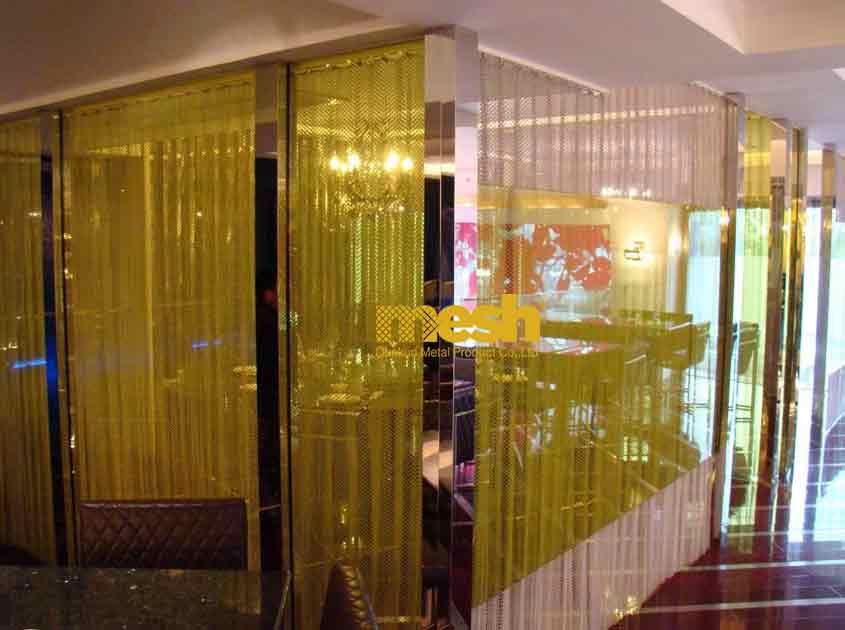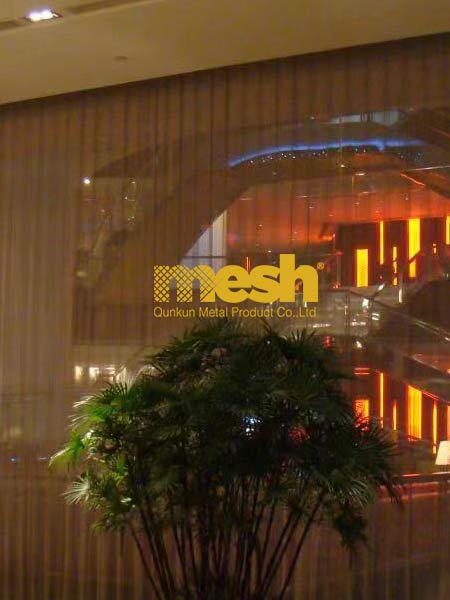Architectural decoration Metal curtains are a common architectural decoration element, usually used for decoration and separation of indoor and outdoor spaces. Metal curtains have attracted widespread attention for their unique appearance, perse materials and versatility, and are widely used in commercial buildings, public places, residential and landscape design.
Structure and characteristics
The design structure of metal curtains is perse, and common features include:
Various materials: Metal curtains can be made of different materials, such as aluminum alloy, stainless steel, brass, etc., each of which gives the curtains unique appearance and performance characteristics.
Strong customizability: Metal curtains can be customized according to design requirements, including size, shape, color and pattern, etc., to adapt to various architectural styles and decorative themes.
Light and shadow effects: Metal curtains will produce charming light and shadow effects under the illumination of sunlight or lights, increasing the layering and artistic atmosphere of the space.

Application areas
Metal curtains have a wide range of applications in architectural decoration, including but not limited to:
Commercial space: Commercial places such as shopping malls, hotels, and office buildings often use metal curtains as decorative elements to create a fashionable and luxurious atmosphere.
Public places: Museums, exhibition halls, theaters and other public places use metal curtains to separate and decorate spaces, adding artistic and functional elements.
Residential design: Metal curtains in residential indoor and outdoor spaces can be used as partitions, shielding or decorative elements to enhance the overall quality and beauty of the space.
Landscape design: In gardens, courtyards or public landscape design, metal curtains can be used to pide areas, block sight lines, and increase landscape levels.
Design style and effect
There are many different design styles for metal curtains, and common designs include:
Modern simplicity: using simple lines and geometric shapes to present a modern and simple style.
Classical luxury: using exquisite carvings and splicing techniques to show a classical and gorgeous style.
Industrial style: using original metal materials and a rough appearance to show an industrial style design.
Metal curtains can add unique charm and visual appeal to architectural spaces through their unique design style and effects, becoming the focus and highlight of decoration.
Maintenance and care
In order to maintain the appearance and function of metal curtains, proper maintenance and care are required, including:
Regular cleaning: Use mild detergent and soft cloth to clean the surface of metal curtains regularly to avoid dust and dirt that affect the appearance.
Prevent oxidation: For stainless steel or other easily oxidized metal materials, rust inhibitors can be used regularly to prevent oxidation and corrosion.
Check damage: Regularly check the connectors and structures of metal curtains, repair or replace damaged parts in time to ensure overall stability and safety.
Avoid collision: Avoid using sharp objects to collide with metal curtains to avoid scratches or deformation.
Through scientific maintenance and care measures, metal curtains can maintain good appearance and functionality, extend their service life, and continue to bring decorative effects and value to building spaces.
Environmental protection and sustainability
In the production and application of metal curtains, environmental protection and sustainability are also important factors to consider. Measures include:
Material selection: Select metal materials that meet environmental protection standards to produce metal curtains to reduce pollution to the environment and waste of resources.

Recyclable: After the service life of metal curtains, they can be recycled or properly treated to reduce resource waste and environmental burden.
Energy-saving design: Combined with the design and application of metal curtains, energy-saving effects and environmental protection are considered to promote the sustainable development of architectural decoration.
Through the concept of environmental protection and sustainability, the production and application of metal curtains will be more in line with the development needs of contemporary society and contribute to the sustainable development of the architectural decoration industry.
As an important decorative element and space pider, architectural decorative metal curtains not only have unique design charm and artistic sense, but also bear the responsibility of environmental protection and sustainable development. Through reasonable design application and maintenance, metal curtains will continue to add charm and functionality to architectural space and become one of the highlights of architectural decoration.
pre:In-depth introduction of metal decorative mesh
next:Explore the charm and application prospects of architectural decorative wire mesh
© 2025 Joinwin Architectural Wire. All Rights Reserved. | Sitemap
Recommended Read
Luxury Chain Link Curtains for Southeast Asia – Premium Decorative Wire Mesh Manufacturer from China
Luxury Decorative Metal Mesh for Middle Eastern Interiors and Architecture